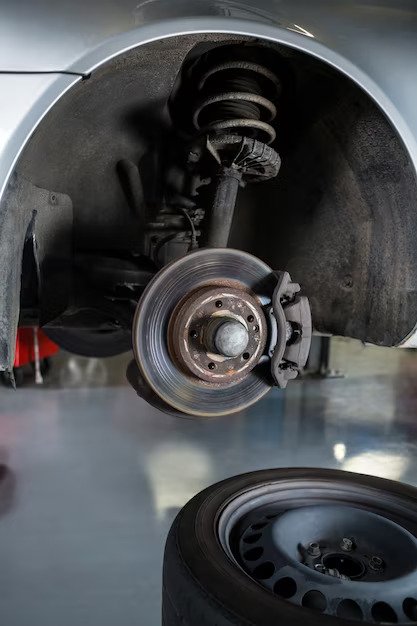The suspension system of your car plays a crucial role in providing a smooth and comfortable ride, as well as ensuring proper handling and stability on South Africa’s diverse road conditions. One important component of the suspension system is the bushings. Suspension bushings are small rubber or polyurethane components that connect various suspension parts, such as control arms, to the frame of the vehicle. Over time, these bushings can wear out or become damaged, leading to a variety of issues. Recognizing the warning signs that indicate your car’s suspension bushings need attention is vital for South African car owners to address problems promptly and maintain optimal vehicle performance. Let’s explore some common signs that indicate worn or faulty suspension bushings.
- Increased Vibration and Noise: One of the earliest signs of worn suspension bushings is increased vibration and noise while driving. As the bushings deteriorate, they lose their ability to absorb shocks and vibrations effectively. You may notice increased vibrations through the steering wheel, floorboards, or seats, especially when driving over rough roads or bumps. Additionally, worn bushings can cause squeaking, creaking, or clunking noises when going over bumps or during cornering. These vibrations and noises indicate that the bushings are no longer providing the necessary cushioning and isolation, and they require attention.
- Excessive Tire Wear: Worn suspension bushings can also contribute to uneven or excessive tire wear. When the bushings are worn, they can cause misalignment of suspension components, leading to uneven tire contact with the road surface. This can result in abnormal tire wear patterns, such as cupping, feathering, or bald spots. If you notice uneven tire wear, especially on the inner or outer edges of the tires, it could be a sign of worn suspension bushings. Addressing the bushing issue and ensuring proper alignment can help extend the life of your tires and improve overall handling.
- Handling and Steering Issues: Faulty suspension bushings can affect the handling and steering of your vehicle. Worn bushings can cause increased body roll or sway during cornering, making the vehicle feel less stable. You may notice a slight delay or imprecision in steering response. The steering may feel loose or vague, and the vehicle may not track straight. These handling and steering issues can affect your ability to control the vehicle, particularly during sudden maneuvers or emergency situations. If you experience any significant changes in handling or steering, have the suspension bushings inspected.
- Excessive Bounce or Dipping: When suspension bushings wear out, they can no longer provide the necessary support and dampening to control the vehicle’s movements. This can result in excessive bouncing or dipping of the vehicle’s body, particularly during braking, acceleration, or when driving over uneven surfaces. If you notice that your vehicle’s suspension feels excessively soft, bouncy, or unstable, it could be a sign of worn suspension bushings.
- Uneven Tire Alignment: Worn suspension bushings can also contribute to uneven tire alignment. If the bushings are no longer holding suspension components in their proper positions, it can lead to misalignment issues. This can result in the vehicle pulling to one side, even on straight roads, or requiring constant steering corrections. If you notice persistent pulling or a lack of straight-line stability, have the suspension and alignment checked to determine if worn bushings are the cause.
If you observe any of these warning signs indicating worn or faulty suspension bushings, it is essential to consult a qualified mechanic or automotive technician. They will be able to perform a thorough inspection, diagnose the specific issue, and recommend the appropriate repair or replacement of the bushings. Addressing suspension bushing problems promptly will ensure the continued safety, comfort, and performance of your vehicle on the challenging roads of South Africa.











